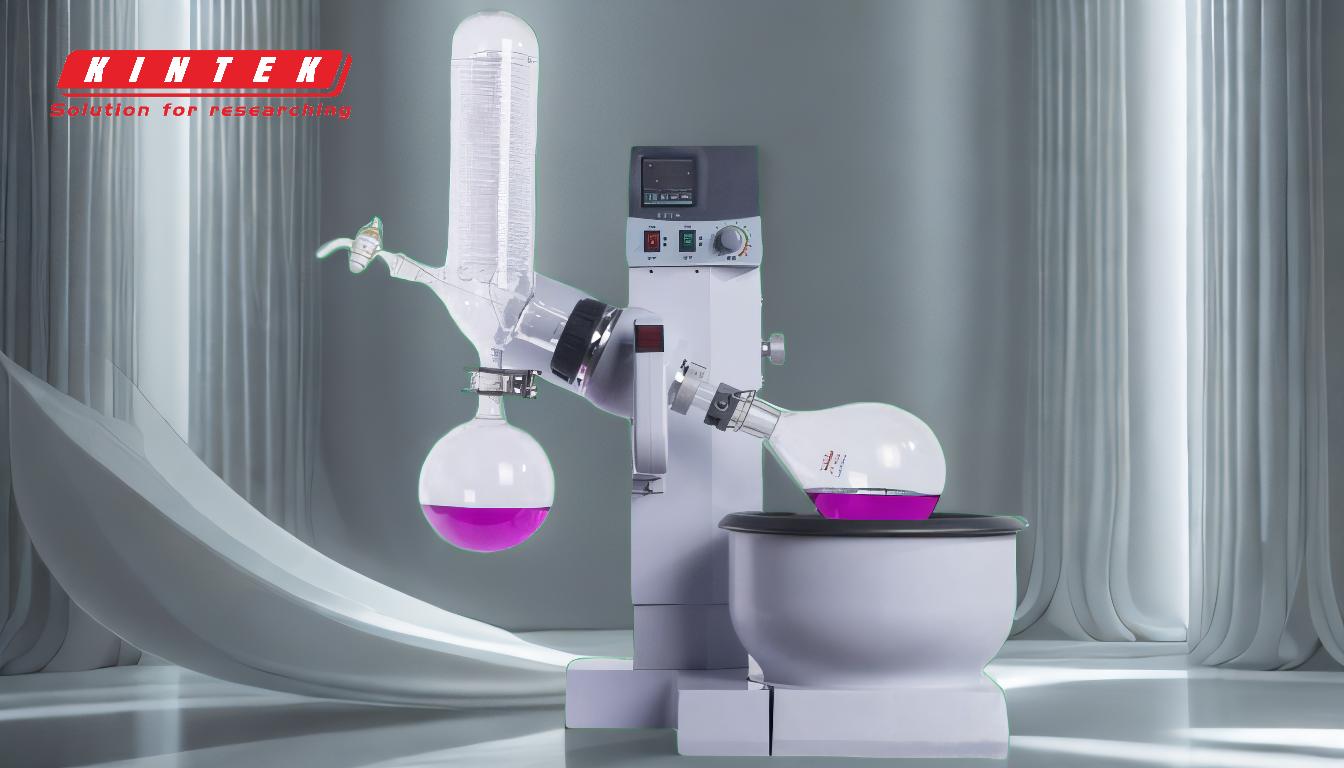Distillation, while a widely used separation technique, has several limitations, particularly in specific methods like molecular distillation and short-path distillation. These limitations include reduced separation efficiency, time-consuming processes, and potential loss of extracted solvents. Understanding these constraints is crucial for optimizing the use of distillation in various applications, especially in industries where precision and efficiency are paramount.
Key Points Explained:

-
Low Separation Efficiency in Molecular Distillation:
- Explanation: Molecular distillation is designed to operate under high vacuum conditions, which reduces the boiling points of substances and allows for the separation of heat-sensitive materials. However, the design of molecular stills often results in low separation efficiency. This is because the process relies on the mean free path of molecules, which can lead to incomplete separation of components with similar boiling points.
- Impact: This limitation can be significant in industries where high purity is required, such as pharmaceuticals or specialty chemicals. The low separation efficiency may necessitate additional purification steps, increasing both time and cost.
-
Time-Consuming Production Process:
- Explanation: The process of manufacturing products using molecular distillation is inherently time-consuming. This is due to the need for precise control of temperature and pressure, as well as the slow rate at which molecules travel through the vacuum to the condenser.
- Impact: The extended production time can be a bottleneck in high-throughput environments, limiting the scalability of molecular distillation for large-scale industrial applications. This can also increase operational costs due to prolonged equipment usage and energy consumption.
-
Loss of Extracted Solvents in Short-Path Distillation:
- Explanation: Short-path distillation, a variant of molecular distillation, involves a very short distance between the evaporation flask and the receiving flask. While this design minimizes the exposure of the distillate to heat, it can also lead to the loss of some extracted gas solvents. This is because the short path may not provide sufficient time or space for all the solvents to condense effectively.
- Impact: The loss of solvents can reduce the overall yield of the distillation process, making it less efficient for certain applications. This limitation can also affect the quality of the final product, particularly in industries where solvent recovery is critical.
-
Market Growth Limitations:
- Explanation: The limitations of short-path distillation, such as the loss of solvents, can hinder its market growth. Industries that rely on high-efficiency separation techniques may seek alternative methods that offer better yield and purity, thereby limiting the adoption of short-path distillation.
- Impact: This can affect the development and innovation within the distillation equipment market, as manufacturers may need to invest in research and development to overcome these limitations and remain competitive.
-
General Limitations of Distillation:
- Explanation: Beyond specific methods like molecular and short-path distillation, general distillation techniques also have limitations. These include the inability to separate azeotropes (mixtures that boil at a constant temperature and composition), high energy consumption, and the need for significant capital investment in equipment.
- Impact: These general limitations can restrict the applicability of distillation in certain scenarios, particularly where cost, energy efficiency, or the separation of complex mixtures are critical factors.
In summary, while distillation is a versatile and widely used separation technique, it is not without its limitations. These include issues with separation efficiency, production time, solvent loss, and broader challenges like energy consumption and capital costs. Understanding these limitations is essential for selecting the appropriate separation method for specific applications and for driving innovation in distillation technology.
Summary Table:
| Limitation | Explanation | Impact |
|---|---|---|
| Low Separation Efficiency | Relies on mean free path, leading to incomplete separation of similar components. | Increases time and cost in high-purity industries like pharmaceuticals. |
| Time-Consuming Process | Requires precise control of temperature and pressure, slowing production. | Limits scalability and increases operational costs in high-throughput settings. |
| Loss of Extracted Solvents | Short-path design may not fully condense solvents, reducing yield. | Affects efficiency and product quality in solvent-critical industries. |
| Market Growth Limitations | Solvent loss and inefficiency hinder adoption and innovation. | Slows development and competitiveness in the distillation equipment market. |
| General Limitations | Inability to separate azeotropes, high energy use, and capital costs. | Restricts applicability in cost-sensitive or complex separation scenarios. |
Need help optimizing your distillation processes? Contact our experts today for tailored solutions!











